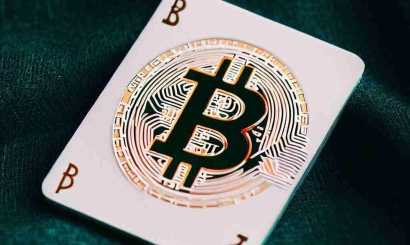Bitcoin is on the verge of hitting a historical record. What will happen to the cryptocurrency market?
Experts have shared insights into the future of cryptocurrencies following Bitcoin's peak. They discussed the development of the situation in the market after Bitcoin's record-breaking price update.
On March 4th, at around 20:20 NY time, the price of Bitcoin (BTC) surpassed the $67,000 mark against the USDT stablecoin on the Binance exchange, once again reaching a yearly high. In less than a day, the cryptocurrency increased in value by approximately $5,000, approaching its all-time high reached on November 10, 2021, at $68,700.
Over the past month, Bitcoin has appreciated by about 60%, and its market capitalization has exceeded $1.27 trillion, a record level. In several currencies, including the Russian ruble, euro, Japanese yen, Turkish lira, Chinese yuan, and British pound, Bitcoin has already set new records.
The cryptocurrency market as a whole is also experiencing active growth. Most of the top-10 assets by market capitalization have appreciated by 10–30% over the week. The price of the second-largest cryptocurrency by market capitalization, Ethereum (ETH), also reached a yearly high, surpassing the $3,500 level for the first time since spring 2022.
The cryptocurrency market capitalization, excluding Bitcoin, is estimated by analytical services at $1.09 trillion, of which almost $100 billion accounts for the USDT stablecoin — the third-largest crypto asset and an analog of the US dollar for many crypto investors.
Why Bitcoin has surged
The surge in Bitcoin to its historical high is a result of a combination of factors, explains cryptocurrency market analyst Victor Pershikov. One of the key factors is the expectation of improved liquidity conditions in global markets due to the easing of monetary policies by central banks worldwide, namely rate cuts and the cessation of quantitative tightening (QT) policies.
Another important factor is the steady inflow of funds into Bitcoin spot exchange-traded funds (ETFs), which is a result of high demand for cryptocurrency from institutional investors, Pershikov adds. Obviously, aggressive purchases by retail traders using large amounts of credit also played a role, but they are more beneficiaries of the growth rather than its cause, the analyst believes.
ETFs for Bitcoin have been approved in the US for the first time. What does this mean?
"The cryptocurrency market is gripped by the fear of missing out, with participants fearing they won't be able to buy the asset before explosive growth," says Anton Toropcev, regional director of the CommEX exchange. In his opinion, many viewed the current spike in Bitcoin price as a signal indicating the start of a powerful bull cycle. This means there will be fewer opportunities to buy on the dip. Therefore, investors are rushing to increase their investments in Bitcoin, Ethereum, and other cryptocurrencies.
But the growth of the crypto market is happening against the backdrop of a "larger story" — the sharp rise in American stock indices, Toropcev adds. Both the S&P 500 and NASDAQ closed the past week at record highs. Participants in the American market are optimistic about the prospects for economic growth. The S&P 500 has shown growth in 16 out of the last 18 weeks — such a long period of growth for the index has not been seen since 1971. Expectations for the upcoming week are such that optimism will persist, and the growth will continue, he predicts.
What's next
It is obvious that the current fundamental situation in the cryptocurrency market favors further growth of Bitcoin and the market capitalization as a whole, predicts Pershikov. Historically, within a year to a year and a half after halving, which is scheduled for April, Bitcoin has increased in price, and the current period is unlikely to be an exception.
New bitcoins are obtained by miners when they process transaction blocks in the cryptocurrency network. For each completed block, they receive a reward in the form of new 6.25 bitcoins, and after halving, they will receive half as much — only 3.125 coins.
In April, the fourth halving since the inception of Bitcoin will take place, and historically, each of them has been accompanied by an increase in its price. The reduction in coin supply with high demand is considered a bullish factor for the market.
The scarcity of Bitcoin due to halving is compounded in the current circumstances by the scarcity caused by significant volumes of purchases under new spot ETFs. Both of these factors multiply the demand for cryptocurrency, which does not increase in terms of the final emission volume of Bitcoin. Considering these factors, the level of $100,000 does not seem unattainable, according to Pershikov, and the question is "only when exactly the price will reach new extremely high levels."
The "fear and greed" index is at an "extremely greedy" level of 86 points, which is a clear bullish sentiment, adds Toropcev. Many traders operating with short positions prefer to close them to avoid falling victim to a so-called short squeeze, and the released funds are invested in Bitcoin or Ethereum. This creates additional demand for these coins and fuels their growth.
Shorting (short position, short) involves selling an asset the trader does not own and borrowing it from the exchange. This is done in order to repurchase the asset at a lower price when the price falls, return it to the exchange at the initial price, and thus profit from the price difference between buying and selling.
A significant sharp rise in the price of an asset often triggers a situation called a short squeeze: a sharp rise forces traders to close short positions and buy back the asset to return it to the exchange before liquidation occurs. This, in turn, triggers an even greater rise in the price of the asset.
"In general, the entire crypto market is growing," says Toropcev. "The feverish state can be judged by the phenomenal rise in prices of meme coins. Everyone is waiting for Bitcoin to update its highs and is so inspired that they expect growth from other cryptocurrencies too."
Altcoins definitely benefit from what's happening with Bitcoin, Pershikov believes. Even if the altcoin sector does not show a multiple increase in market capitalization, fundamentally strong groups of cryptocurrencies will grow. Even the current prices of many assets from the top-50 of the crypto market seem advantageous for purchases, despite some growth that has already taken place. "In any case, the current situation in the market is not the limit, and it is not worth assuming that the growth is close to its completion. So far, there are no factors indicating this," the analyst emphasizes.
After the new update of Bitcoin's historical maximum, Bitcoin will continue to rise, pulling up the entire crypto market, Toropcev agrees. The information agenda also looks positive for Ethereum, he adds. "Ether" may outpace the market average growth rates, as an important network update is expected in March, and in May — regulators' decision on the launch of spot ETFs on Ethereum in the US, similar to those launched for Bitcoin in January.
"But after Bitcoin's halving, a correction is possible, which will temporarily return Bitcoin to the $50–60,000 range before it transitions to more stable growth based on reduced supply from miners," the expert warns.




_410x245_00e.webp)


